Most Powerful Herbivores In The World
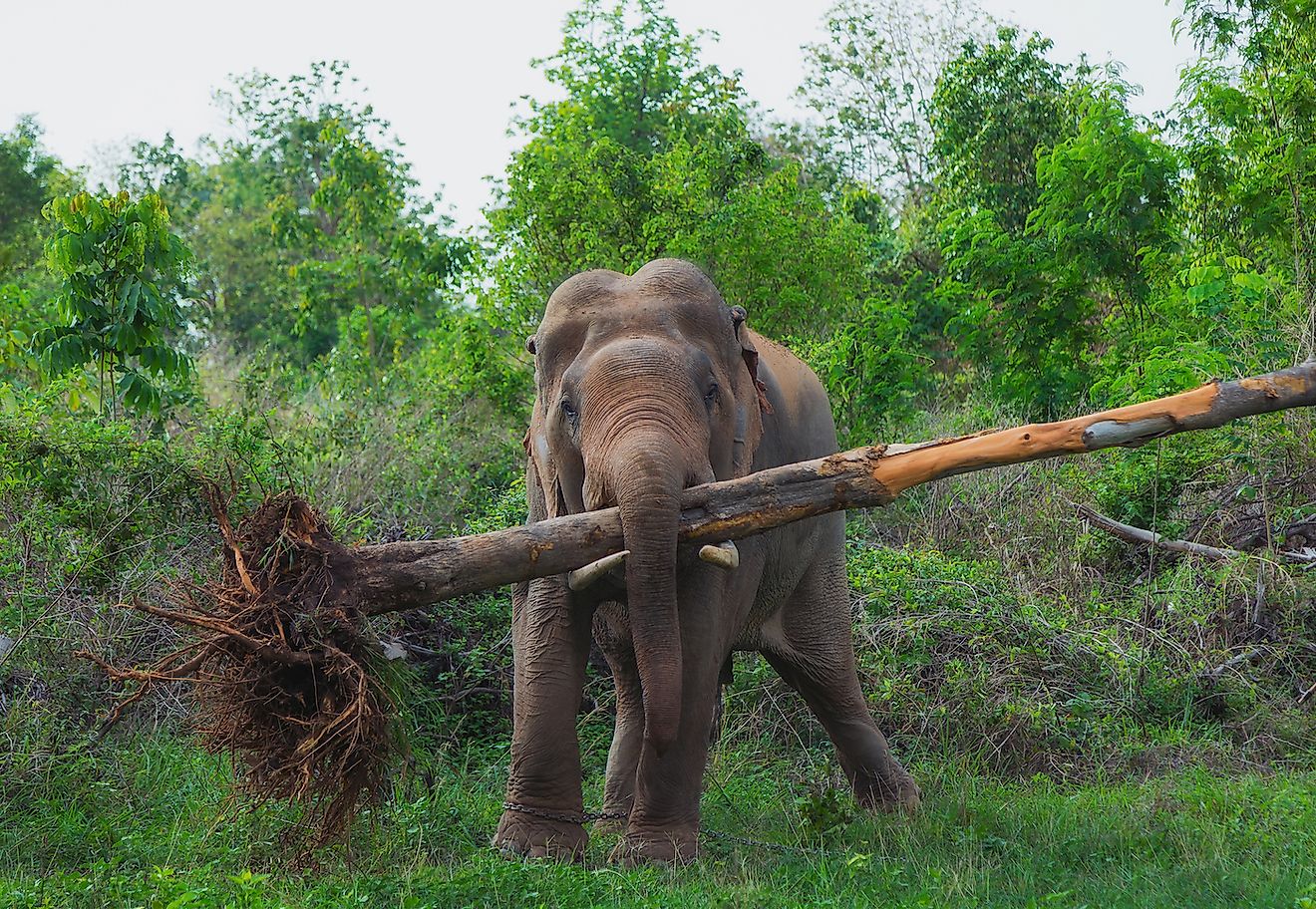
- African Elephants can consume up to 300-pounds of food every single day.
- An adult male bison can reach 6-feet in height, weigh up to 2000-pounds.
- The Cape Buffalo is notoriously aggressive, which earned it the nickname: 'The Black Death'.
A Herbivore has a diet consisting of plants, which often casts a somewhat docile disposition over the group as a whole. However, it is unwise to assume that some herbivores aren't as powerful (if not more so) as some of the fierce meat-eating carnivores. One aspect of some herbivores is their ability to grow to massive sizes, which has proven troublesome for animals and people alike. They can also become extremely territorial and confrontational at perceived threats and will use a variety of defensive weaponry, from horns to tusks to razor sharp beaks, to protect themselves.
Hippopotamus
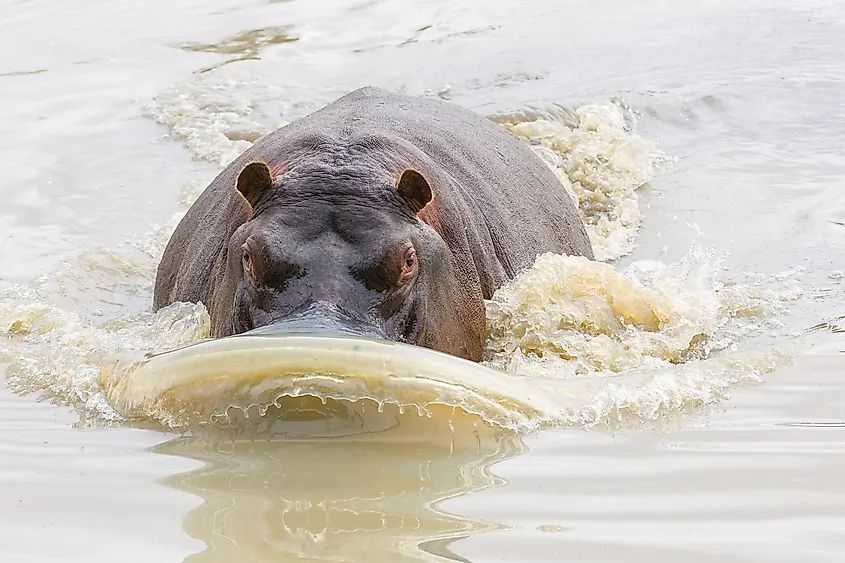
Hippos might look lackadaisical as they lounge in the lake, but these massive animals have notoriously short tempered. Hippos are extremely territorial and can become ornery over the slightest misstep by outsiders. Females can be very protective of their young and will respond quickly to perceived threats. These large herbivores have been known to attack and kill around 2,900 people every year in Africa.
Rhinoceros
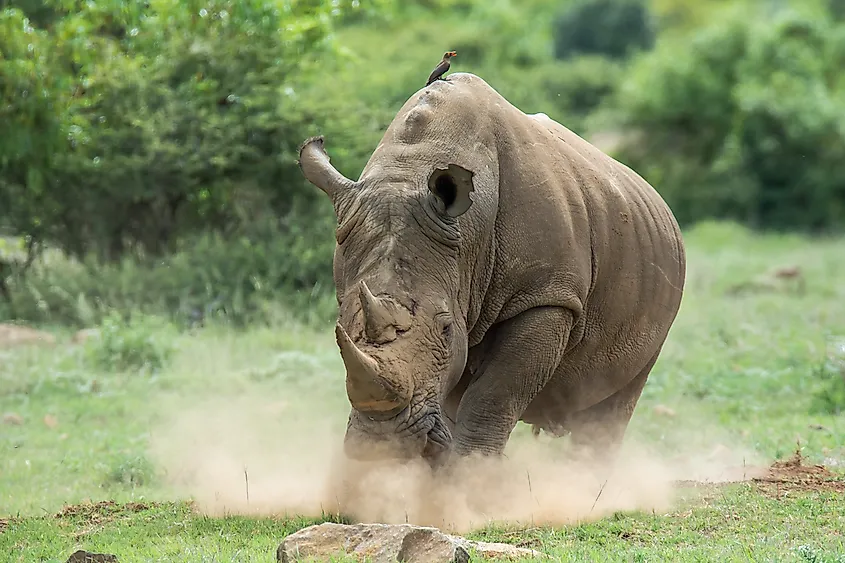
The first thing that makes rhinoceros' dangerous is the fact that they are downright huge! A male white rhino can grow up to 12 to 13-feet long, up to 6-feet tall, and can weigh anywhere from 5,000 to 8,000 pounds (lbs.) Rhinos will charge when threatened and despite their large size, can still reach speeds of up to 35/mph when running. They are known for the two large horns on their noses, made of keratin, and these horns are prime targets for illegal poachers. Poaching remains one of the largest threats to rhino populations to this day.
Cape Buffalo
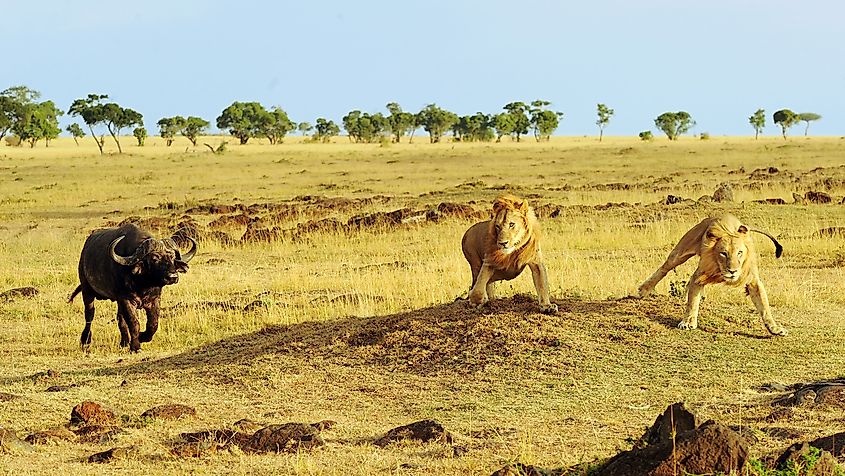
The Cape Buffalo is a territorial animal and one of the most powerful herbivores. Found in Africa, it is responsible for killing approximately 200 people each year. Cape Buffalo can weigh up to 2,000 pounds and have been known to charge when provoked, resorting to headbutting victims, trampling them and goring them with their large horns. Its lethality earned it the nickname 'the Black Death'.
American Bison
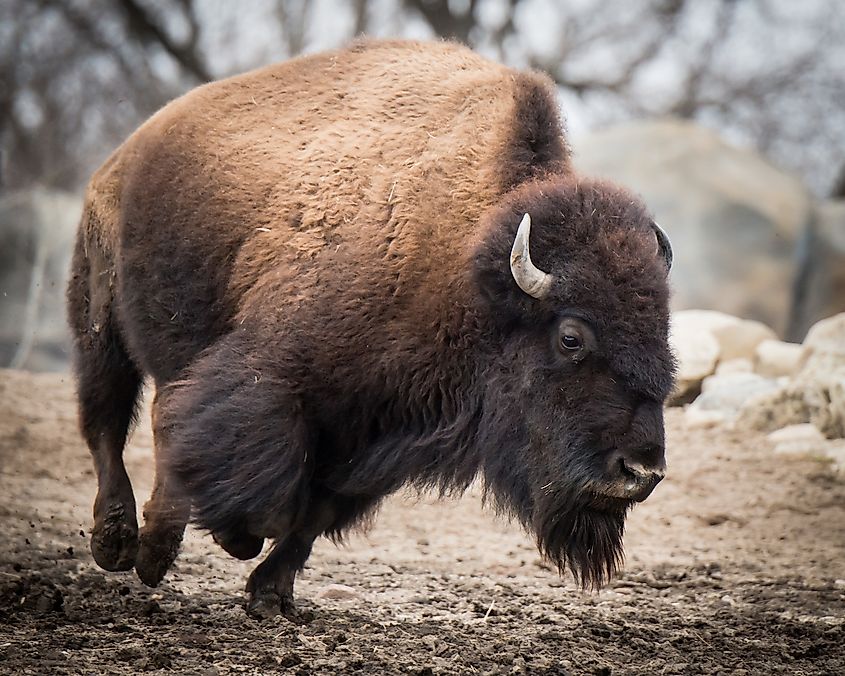
An estimated 30-60 million bison once roamed in vast herds across North America but were nearly hunted to extinction in the late 19th century. While more recent conservation efforts have led to an increase in bison numbers across the United States, it has also led to an increase in human and bison interactions. Yellowstone National Park in Wyoming is the only place in the U.S. where bison have roamed continuously since prehistoric times, and millions of tourists visit each year hoping to catch a glimpse of these iconic American ungulates, grazing in their natural environment. An adult male bison can reach 6-feet in height, weigh up to 2000-pounds and despite its size, can run at speeds up to 35 miles per hour. When it feels threatened a bison can charge at people without perceived provocation, goring victims with two curved horns, while trampling and tossing its unwilling combatants.
African Elephant
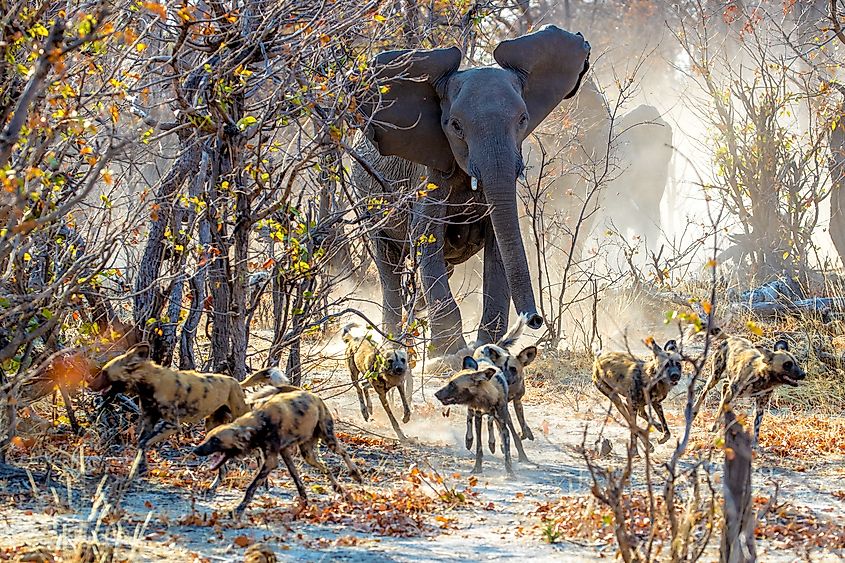
It wouldn't be a list of the strongest herbivores without mentioning the biggest of them all. The African Elephant is the largest land mammal on Earth, some weighing in at upwards of 7 tons! Elephants can consume up to 300-pounds of food every single day, roaming vast distances while foraging, moving in large herds that are less than conspicuous. Elephants are known to successfully battle lions and ward off hyenas, and have been seen tipping hippos with ease. Numbers vary, but up to 500 people are said to be killed each year by elephants. Their most iconic feature is the large ivory tusks, displayed most prominently in males, and while tusks can be used as a method of protection, it is those same tusks that are linked with the elephant's biggest threat to its survival, illegal poaching.











